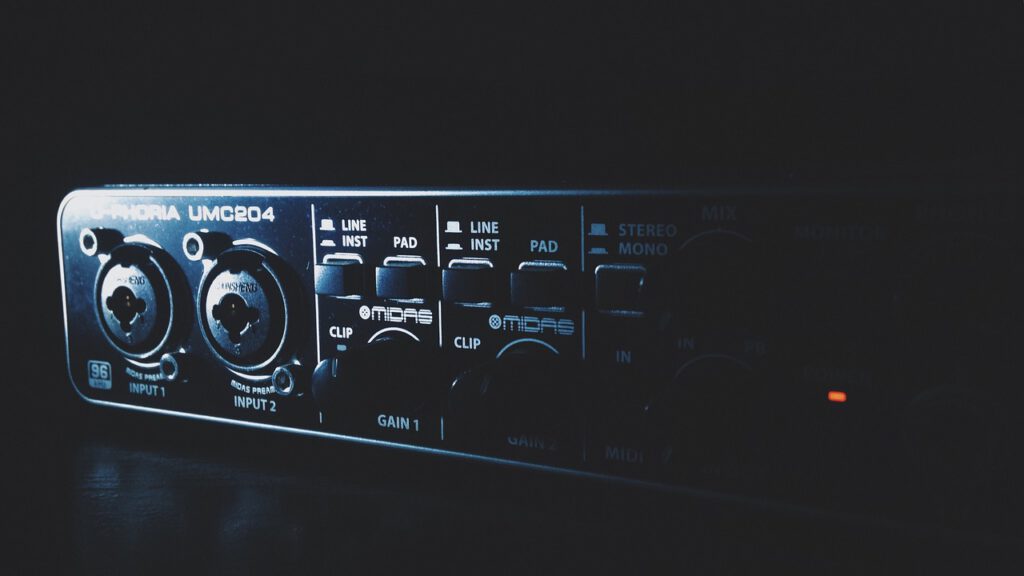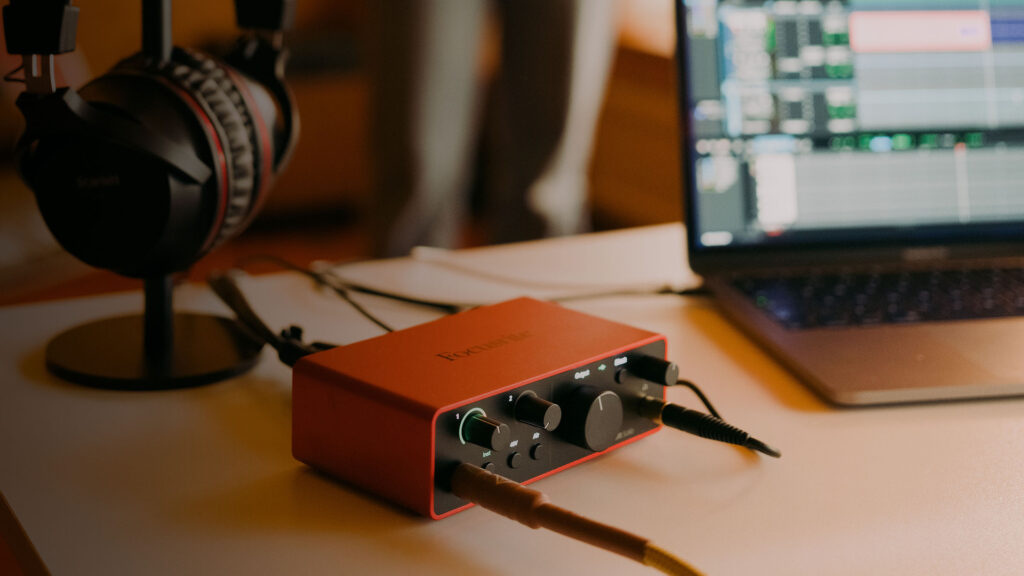In the dynamic world of audio production, having the right tools at your disposal is crucial, and at the heart of any recording setup lies the audio interface. Whether you’re a seasoned producer or just starting, selecting the best audio interface is a pivotal decision. In this comprehensive guide, we’ll navigate through the key considerations and highlight some top contenders to help you make an informed choice for your studio.

Understanding the Role of an Audio Interface
An audio interface serves as the bridge between your instruments, microphones, and the digital realm of your computer. It transforms analog signals into digital data and vice versa, playing a fundamental role in the recording and playback process. Here are the factors to consider when choosing the best audio interface for your needs.
1. Connection Type: USB, Thunderbolt, or PCIe?
The first decision you’ll encounter is the type of connection your audio interface will use. USB is ubiquitous and offers compatibility with most computers, making it a practical choice for many setups. Thunderbolt provides faster data transfer for more demanding projects, while PCIe interfaces are designed for high-end, low-latency applications within desktop computers.
2. Input and Output Configuration
Consider the number and types of inputs and outputs you need. For a solo artist recording vocals and guitar, a 2-in/2-out interface might suffice. However, larger projects may require more inputs for multiple microphones and instruments. Additionally, look for an interface with balanced outputs to ensure clean and noise-free audio.
3. Preamp Quality
The quality of the preamps is critical, especially if you’re recording vocals or acoustic instruments. High-quality preamps ensure a clean, transparent signal and can make a significant difference in the overall sound quality of your recordings.
4. Sample Rate and Bit Depth
Higher sample rates and bit depths offer more detailed and accurate audio reproduction. While 24-bit depth is now standard, consider an interface that supports sample rates of at least 96kHz for high-fidelity recordings.
Top Picks for the Best Audio Interfaces
Now, let’s explore some top contenders that cater to various needs and budgets.

1. Focusrite Scarlett 2i2 (4th Gen)
The Focusrite Scarlett 2i2 has become a staple in home studios worldwide. With two high-quality preamps, USB connectivity, and a rugged build, it’s an excellent choice for those starting in audio production. The Air mode also adds a touch of brightness to vocal recordings.
For an in-depth review of the Focusrite Scarlett 2i2 (4th Gen), check out the deep dive we did.
2. Universal Audio Apollo Twin MkII
For those seeking professional-grade audio quality, the Universal Audio Apollo Twin MkII stands out. With Thunderbolt connectivity, impeccable preamps, and access to Universal Audio’s renowned plugins, it’s a favorite among professional producers and engineers.

3. PreSonus AudioBox USB 96
The PreSonus AudioBox USB 96 offers a budget-friendly option without compromising on quality. With two combo mic/instrument inputs and MIDI connectivity, it’s a versatile choice for entry-level producers.
4. RME Babyface Pro
For those who demand top-notch audio quality in a portable package, the RME Babyface Pro delivers. With pristine preamps, low-latency performance, and a sleek design, it’s a favorite among mobile and professional producers alike.
Conclusion
Selecting the best audio interface is a pivotal step in building a robust and reliable recording setup. Consider your specific needs, budget, and the type of projects you’ll be working on. Whether you’re a bedroom producer, a podcaster, or a professional recording engineer, the right audio interface can elevate your productions to new heights. Invest wisely, and let your creativity flow seamlessly through a gateway of professional sound. Happy recording!
